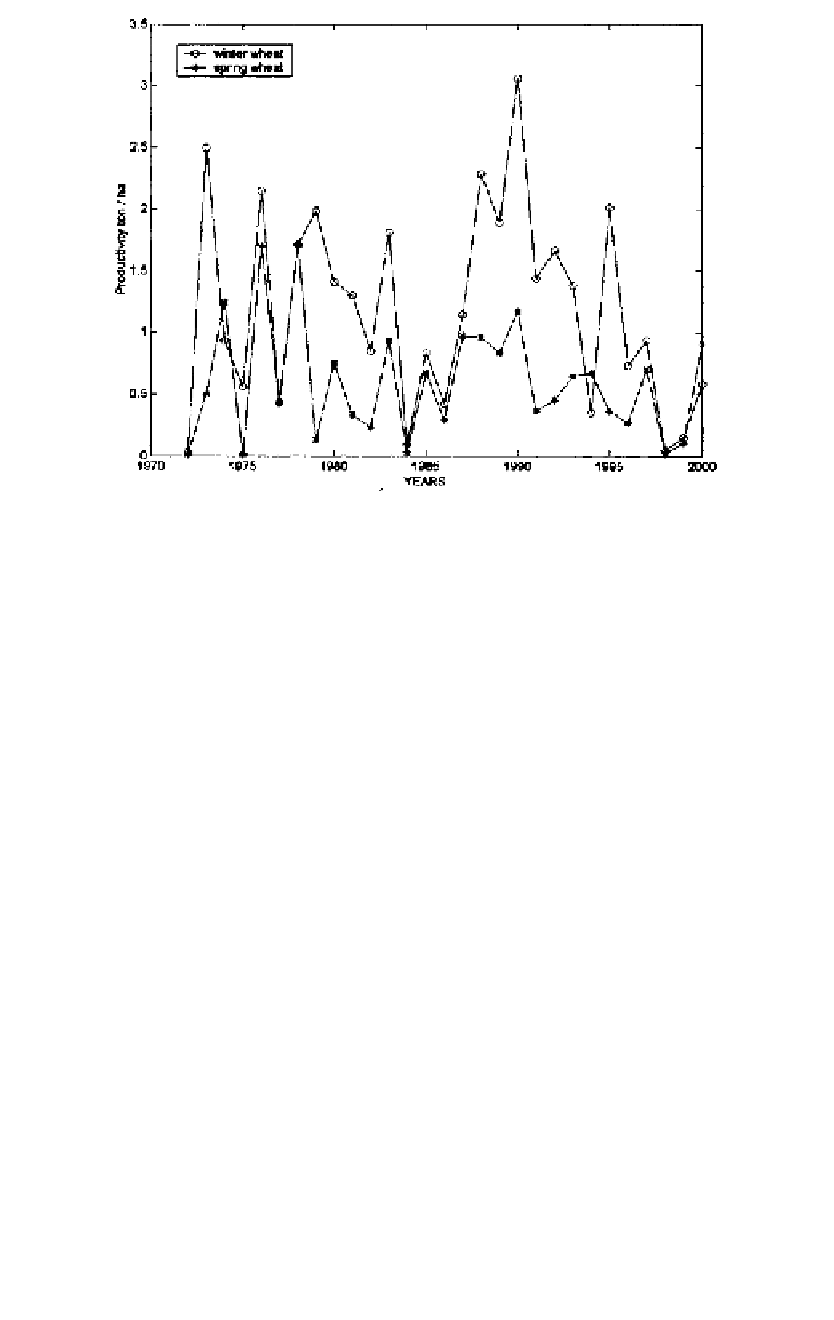Agriculture Reference
In-Depth Information
1
2
3
4
5
6
7
8
9
10
11
12
13
14
15
16
17
18
19
20
21
22
23
24
25
26
27
28
29
30
31
32
33
34
35
36
37
38
39
40
41
42
43
44
45
46
[199
Line
——
-2.9
——
Norm
PgEn
Fig
ure 15.2
The variation in winter and spring wheat yields in Novoakhtubinsk area (Vol-
gograd region, Russia) for the 1970-2000 period.
ring of subtropical anticyclones at the southern (40-50°) and high (
75°)
latitudes. Normal air circulation in the Northern Hemisphere is disturbed,
and dry weather conditions in the former USSR European territory, West
Siberia, and Kazakhstan are formed. As the Atlantic air masses in subtropi-
cal anticyclones move away from the ocean, they are heated more slowly as
compared to polar intrusions. However, having passed a longer way over
the continent (from the Bay of Biscay to Dnieper), water vapor in the air is
exhausted, and drought phenomena become more pronounced to the west
of Dnieper.
Most often, the arctic and the Azores intrusions are combined in the
Lower Volga and the Lower Yuzhy Ural, and pronounced drought condi-
tions occur in the former USSR regions. At times, the geographical posi-
tion of subtropical and the Azores anticyclones vary from year to year and
even from month to month. As a result, the geographical distribution of
droughts varies on a temporal scale. The Azores anticyclone may move to
55° latitude, bringing drought conditions to the whole southern part of the
former USSR. In the case of the Meridional polar intrusions, not only does
air dry up quickly and intensely, but also the movement of moist Atlantic
air masses to the east is retarded, and droughts occur during the whole
vegetation period.
Khomyakova and Zoidze (2001) determined the probabilities of
drought occurrence of various regions. The degree of drought intensity
(DDI) was obtained using nine indices (Zoidze and Ovcharenko, 2000).
≈
[199












































Search WWH ::

Custom Search